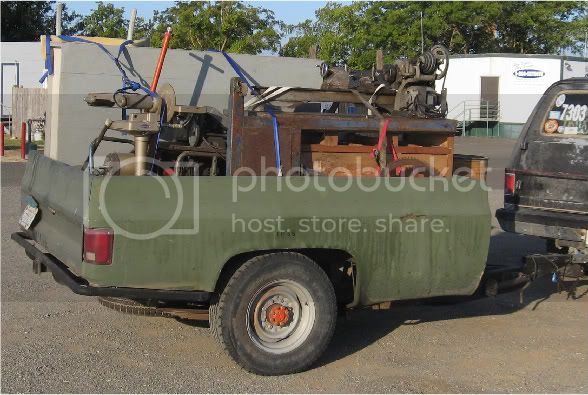ntsqd
technerd
Since this got resurrected I'll also report that the trailer below has another 2+ years of sitting and use with those same exact 3-3.5 gallons of gear lube still inside. Seals are dry, wheels are dry. Same is also true of my 60's FF, but that's been all sitting as the engine swap was stalled by life's events, the trailer sees regular trips to the metal scrap yard.
...
Occurred to me that the trailer that a friend & I built supplies supporting evidence that the hub seals will be fine partly submerged in oil.

Note the D60 wheel hubs. What you can't see is that the spindles were cut off of the D60 housing (square spline shafts were also cut off the flanges) and welded into a large OD tube, which has fill and a drain port in the center (fill cap has a vent hose extended up as high as it could go). There is something in the range of 3-3.5 gallons of 90wt. in that axle tube. When first filled it weeped a little from one of the seals, but since then the trailer has been to Bend, OR and to San Felipe, BCN along with many trips to the dump and a couple to the desert. Long ago the weeping stopped and the axle has been dry on the outside ever since.


